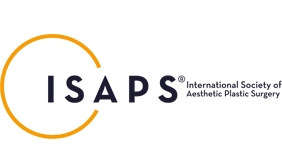How Much Does Tummy Tuck Hurt? An In-Depth Look
Understanding the Pain Level of a Tummy Tuck
How painful is a tummy tuck?
A tummy tuck, or abdominoplasty, is a significant surgical procedure that involves removing excess skin and fat from the abdomen. The pain level can vary from person to person, but it is generally considered moderate to severe in the initial days following the surgery. Patients often describe the pain as a combination of soreness, tightness, and discomfort.
Abdominoplasty Dubai Procedure
Abdominoplasty Dubai Procedure is a surgery that removes extra skin and fat from the belly area it helps people get a flatter tummy and can make them feel more confident about their appearance
- Moderate to severe pain initially
- Combination of soreness, tightness, and discomfort
- Pain level varies among individuals
What to expect in the first week
The first week post-surgery is typically the most challenging. Patients can expect significant discomfort, especially when moving or coughing. Swelling and bruising are common, and the surgical area will feel tight and tender. Pain is usually most intense during the first 48 hours and gradually decreases as the week progresses.
Book A Consultation With Dr Shehzadi Tasneem
Top-rated Plastic Surgeon For Tummy Tuck in Dubai
Installment Plan Available
- Significant discomfort, especially when moving
- Swelling and bruising are common
- Pain most intense during the first 48 hours
Pain management options
Effective pain management is crucial for a smoother recovery. Doctors often prescribe a combination of pain medications, including opioids for severe pain and NSAIDs for inflammation. Additionally, some patients may benefit from nerve blocks or local anesthetics like EXPAREL, which can provide extended pain relief.
- Combination of pain medications (opioids and NSAIDs)
- Nerve blocks or local anesthetics like EXPAREL
- Importance of following the prescribed pain management plan
Factors Influencing Tummy Tuck Pain
Individual pain tolerance
Pain tolerance varies widely among individuals. Some people may experience more intense pain due to a lower pain threshold, while others may find the discomfort more manageable. Factors such as previous surgical experiences, overall health, and psychological state can also influence pain perception.
- Varies widely among individuals
- Influenced by previous surgical experiences
- Overall health and psychological state play a role
Type of tummy tuck procedure
The type of tummy tuck procedure performed can significantly impact the level of pain experienced. A full tummy tuck, which involves more extensive tissue removal and muscle tightening, generally results in more pain compared to a mini tummy tuck, which is less invasive.
- Full tummy tuck involves more extensive tissue removal
- Mini tummy tuck is less invasive and less painful
- Procedure type directly impacts pain level
The role of surgical drains
Surgical drains are often used to prevent fluid buildup and reduce swelling. While they are essential for a smooth recovery, they can cause additional discomfort. Patients may feel a pulling sensation or mild pain around the drain sites, which can contribute to the overall pain experience.
- Prevents fluid buildup and reduces swelling
- Can cause additional discomfort
- Pulling sensation or mild pain around drain sites
Managing Pain During Tummy Tuck Recovery 
A game-changer in pain management: How effective is EXPAREL?
EXPAREL is a long-acting local anesthetic that can provide pain relief for up to 72 hours post-surgery. It is injected directly into the surgical site during the procedure, significantly reducing the need for opioids and enhancing patient comfort. Many patients report a noticeable decrease in pain levels with the use of EXPAREL.
- Provides pain relief for up to 72 hours
- Injected directly into the surgical site
- Reduces the need for opioids
Importance of post-surgery comfort items
Having the right comfort items can make a significant difference in the recovery process. Items such as extra pillows, recliners, and compression garments can help alleviate pain and provide support. These items can also aid in maintaining proper posture and reducing strain on the surgical area.
- Extra pillows for support
- Recliners for comfortable resting positions
- Compression garments to reduce swelling
The role of protein in recovery
Protein plays a crucial role in the healing process. It helps repair tissues and promotes faster recovery. Incorporating protein-rich foods into your diet, such as lean meats, eggs, and legumes, can aid in reducing pain and speeding up the healing process.
- Helps repair tissues
- Promotes faster recovery
- Incorporate protein-rich foods into your diet
Timeline of Pain and Discomfort
How long does the tightness last after a tummy tuck?
The sensation of tightness is a common experience after a tummy tuck. This tightness is due to the skin and muscles being pulled and stitched together. It typically lasts for several weeks, gradually diminishing as the body heals. Most patients report significant improvement in tightness within the first month.
- Common experience post-surgery
- Lasts for several weeks
- Significant improvement within the first month
Full healing process: What to expect
The full healing process for a tummy tuck can take several months. While initial pain and discomfort subside within the first few weeks, complete recovery involves the gradual fading of scars and the return of normal sensation to the abdominal area. Patients should follow their surgeon’s guidelines to ensure optimal healing.
- Initial pain subsides within the first few weeks
- Complete recovery takes several months
- Gradual fading of scars and return of normal sensation
When should you call for help?
It’s essential to know when to seek medical attention during your recovery. If you experience severe pain that doesn’t improve with medication, signs of infection (such as redness, swelling, or discharge), or any unusual symptoms, contact your surgeon immediately. Early intervention can prevent complications and ensure a smoother recovery. Tummy tuck safety is important to consider before getting the surgery Tummy tuck surgery removes extra skin and fat from the belly area
- Severe pain that doesn’t improve with medication
- Signs of infection (redness, swelling, discharge)
- Any unusual symptoms
Tips for a Smoother Recovery 
Push yourself to move around during your recovery
While it may be tempting to stay in bed, gentle movement is crucial for a smooth recovery. Walking helps improve circulation, reduce the risk of blood clots, and promote healing. Start with short, frequent walks and gradually increase your activity level as you feel more comfortable.
- Improves circulation
- Reduces the risk of blood clots
- Promotes healing
Prepare some ready-made meals in advance
Having nutritious, ready-made meals on hand can make a significant difference during your recovery. Preparing meals in advance ensures you have easy access to healthy food, reducing the need for strenuous cooking. Focus on balanced meals that include protein, vegetables, and whole grains.
- Ensures easy access to healthy food
- Reduces the need for strenuous cooking
- Focus on balanced meals
Have a shower chair and long-handled shower brush on hand
Personal hygiene can be challenging during the initial recovery period. A shower chair provides stability and reduces the risk of falls, while a long-handled shower brush allows you to clean hard-to-reach areas without straining. These items can make showering more comfortable and safer.
- Provides stability and reduces the risk of falls
- Allows cleaning of hard-to-reach areas
- Makes showering more comfortable and safer
FAQs
How much does tummy tuck hurt during the first week?
During the first week, the pain from a tummy tuck is typically moderate to severe. Patients often experience significant discomfort, especially when moving or coughing. Pain management strategies are crucial during this period to ensure a smoother recovery.
What is the fastest way to recover from a tummy tuck?
The fastest way to recover from a tummy tuck involves following your surgeon’s post-operative instructions, managing pain effectively, and incorporating gentle movement into your routine. Eating a balanced diet rich in protein and staying hydrated also play essential roles in speeding up recovery.
How long does the tightness last after a tummy tuck?
The tightness after a tummy tuck usually lasts for several weeks. This sensation is due to the skin and muscles being pulled and stitched together. Most patients notice a significant improvement in tightness within the first month as the body heals.
What are the best pain management options for a tummy tuck?
The best pain management options for a tummy tuck include a combination of prescribed pain medications, such as opioids and NSAIDs, and local anesthetics like EXPAREL. Additionally, using comfort items and following a pain management plan can significantly reduce discomfort.
When should I contact Dr Shehzadi Tasneem Sultan if I experience severe pain?
If you experience severe pain that doesn’t improve with medication, signs of infection, or any unusual symptoms, you should contact Dr Shehzadi Tasneem Sultan immediately. Early intervention can prevent complications and ensure a smoother recovery.












